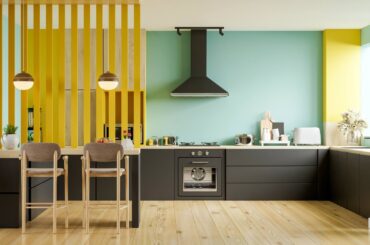 The National Kitchen & Bath Association (NKBA), a nonprofit trade association for the kitchen and bath industry and owner of the Kitchen and Bath Industry Show (KBIS), has released its highly anticipated design trends research report. The annual report provides insight into the styles, colors, product features, materials and technology that will dominate kitchen and bath design over the next two to three years.
The National Kitchen & Bath Association (NKBA), a nonprofit trade association for the kitchen and bath industry and owner of the Kitchen and Bath Industry Show (KBIS), has released its highly anticipated design trends research report. The annual report provides insight into the styles, colors, product features, materials and technology that will dominate kitchen and bath design over the next two to three years.
“Kitchens and baths are bigger and more involved,” said Tricia Zach, head of research at NKBA. “The study revealed that consumers want spaces to be multi-functional to meet their at-home work, education and entertaining needs.”
Other key findings of the 2023 Design Trends report include:
Vibrant design: Bold colors, accents and mixed materials and themes are increasingly a factor in kitchens and baths. Trends include:
- Combining multiple design elements and materials along with bold accents, splashes of color and texture to create an updated look and feel: modern farmhouse, classic contemporary, organic modern, simple transition, nature inspired
- Mixing warmer, natural and earthy tones, less gray and white, more medium wood tones
- Richer colors: coastal blues, greens and organic neutrals in both kitchen and bath
- Bold, colorful accents through artwork, wallpaper, backsplashes
Sustainability: Manufacturers’ sustainability practices are becoming more important to designers as they recommend products to clients. Consumers are paying closer attention to more sustainable products and solutions in their homes, as well as to the practices of manufacturers. Trends include:
- 100% LED lighting, energy-efficient appliances, VOC-free paints
- Increased natural light via low E windows
- EPA WaterSense faucets
Expanded spaces: Breaking down walls to expand spaces and add function or conceal clutter. For kitchens, this means adding larger or double islands and walk-in pantries; for baths, it means adding a closet, dressing area or sitting room.
Homeowners are opening up the look and feel of the kitchen and bath while also expanding the functionality of each to accommodate the changing nature of the home. Trends include:
- Removal of walls to open kitchen and bath to adjoining areas
- Large islands with flexible functionality for food prep, dining and work
- Walk-in, built-in or butler’s pantry for food and small appliance storage
- Primary baths with walk-in closets and sitting or dressing rooms
Wellness: Wellness is driving design, especially in the primary bath, where designers are creating spa-like experiences that offer clients a retreat for the mind and body.
Homeowners are seeking sanctuary, especially in the primary bath where designers are creating spa-like experiences that offer clients a retreat for the mind and body. Trends include:
- Using earthy, muted colors and light wood tones to create natural, calming designs
- Spa-like features in showers: large two-person showers, custom seats, multiple showerheads, zero clearance and steam/thermostatic showers
- Sanitary and easy-to-clean surfaces — quartz/quartzite (reduction of grout)
- Larger windows connecting to outdoors and windows above tubs to maximize natural light
Tech: Technology continues to play a growing, but clearly “functional” role in the kitchen and bath, making life easier for homeowners. Homeowners are adopting technology at a faster pace, specifically when it enables more individualized customization in the kitchen and bath.
Trends include:
- Technology to create a personalized environment, using app/voice controls for lighting, water and floor temperatures, as well as humidity monitoring
- Smart appliances (kitchen and bath)
- Touchless faucets, app-controlled appliances, whole house systems
- Water conservation technology
Methodology: This annual online survey is conducted with members of the NKBA and the kitchen and bath industry, including designers, showrooms, dealers, specialists, manufacturers, kitchen and bath remodelers/contractors and architects. Occupations excluded (if not qualified) are fabricators, home centers, honorary members and installers. Participants must have designed, specified or sold products for at least one kitchen or bathroom project in the past year. Of the nearly 600 participants, 99 percent are from the USA and 1 percent are from Canada; 65 percent are NKBA members and 35 percent are non-members.
























